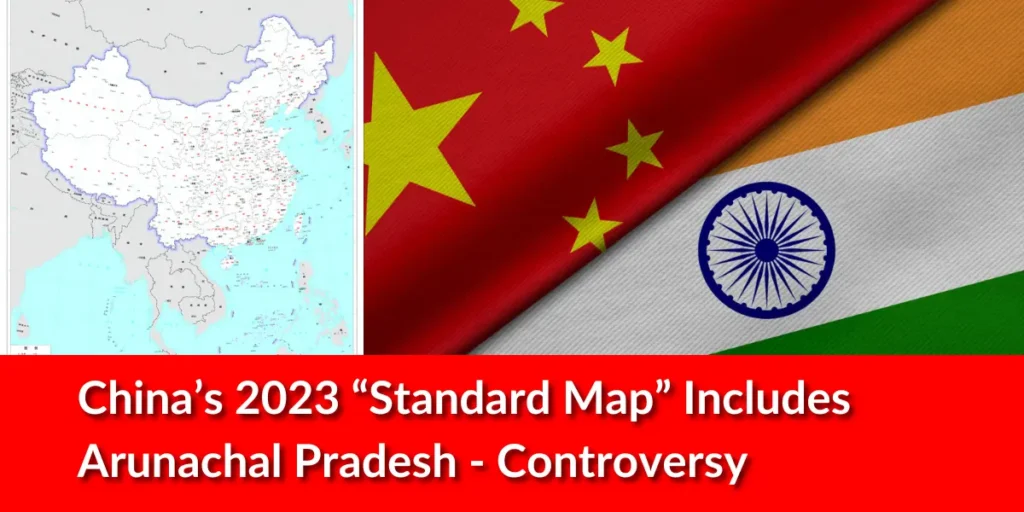Table of Contents
China’s recent release of the updated “standard map” has ignited a fresh wave of diplomatic tensions as it boldly incorporates disputed territories, including Arunachal Pradesh, Aksai Chin, Taiwan, and the contentious South China Sea regions. The unveiling, which occurred on August 28, has not only raised eyebrows but has also rekindled existing conflicts among nations, prompting concerns about China’s intentions and the potential repercussions.
The official map, designated as the 2023 edition, was introduced through the Ministry of Natural Resources’ standard map service website, utilizing a methodology that defines national boundaries to portray China’s perspective on global geography. However, this move has immediately escalated tensions with neighboring countries, particularly India, and has invoked questions about China’s motives in presenting these claims so assertively.
China’s Standard Map – 2023 Edition
The 2023 edition of China's standard map was officially released on Monday and launched on the website of the standard map service hosted by the Ministry of Natural Resources. This map is compiled based on the drawing method of national boundaries of China and various countries… pic.twitter.com/bmtriz2Yqe
— Global Times (@globaltimesnews) August 28, 2023
Central to the controversy is the inclusion of Arunachal Pradesh and Aksai Chin, territories that have long been subject to conflicting assertions between China and India. Despite China’s insistence on considering Arunachal Pradesh as South Tibet, India has consistently maintained its sovereign claim over the region. The Indian government’s stance remains steadfast, affirming that Arunachal Pradesh is, and will always be, an integral part of the country.
China’s expansive territorial ambit extends beyond India’s borders. By asserting Taiwan as an inherent part of its territory, China aligns itself with President Xi Jinping’s strategic objectives of eventual integration. However, this depiction of Taiwan as Chinese territory only further exacerbates the long-standing tensions between China and Taiwan, a matter of international concern that has garnered global attention.
The map’s controversial delineation also incorporates the infamous nine-dash line, a claim by China that encompasses a significant portion of the South China Sea as its own territory. This particular assertion is met with stern opposition from various countries, including Vietnam, the Philippines, Malaysia, Brunei, and Taiwan. These nations, each with their own competing claims over the same maritime regions, view China’s expansionist maritime ambitions with skepticism and concern.
China’s calculated move of releasing this map just 10 days before the G20 summit, which is to be hosted by India, is raising eyebrows globally. World leaders, including US President Joe Biden, France’s Emmanuel Macron, and China’s Xi Jinping, are set to converge in India for the summit, and this provocative cartographic release is sure to add another layer of complexity to the diplomatic discussions and interactions during the event.
It’s worth noting that this release follows the recent meeting between Prime Minister Narendra Modi and President Xi Jinping on the sidelines of the 15th BRICS Summit in South Africa, where both leaders had agreed to work towards disengagement and de-escalation at the Line of Actual Control (LAC) between their countries.
In conclusion, China’s unveiling of the 2023 “Standard Map” has stirred a diplomatic hornet’s nest, resurrecting territorial disputes and international concerns. With its bold inclusion of contested regions like Arunachal Pradesh, Aksai Chin, Taiwan, and the South China Sea, this map asserts China’s territorial claims in a manner that challenges the status quo and potentially reshapes diplomatic dynamics in the region. As global leaders prepare to convene at the G20 summit, the implications of this map loom large over discussions and interactions, making the event a focal point for addressing these simmering disputes.
